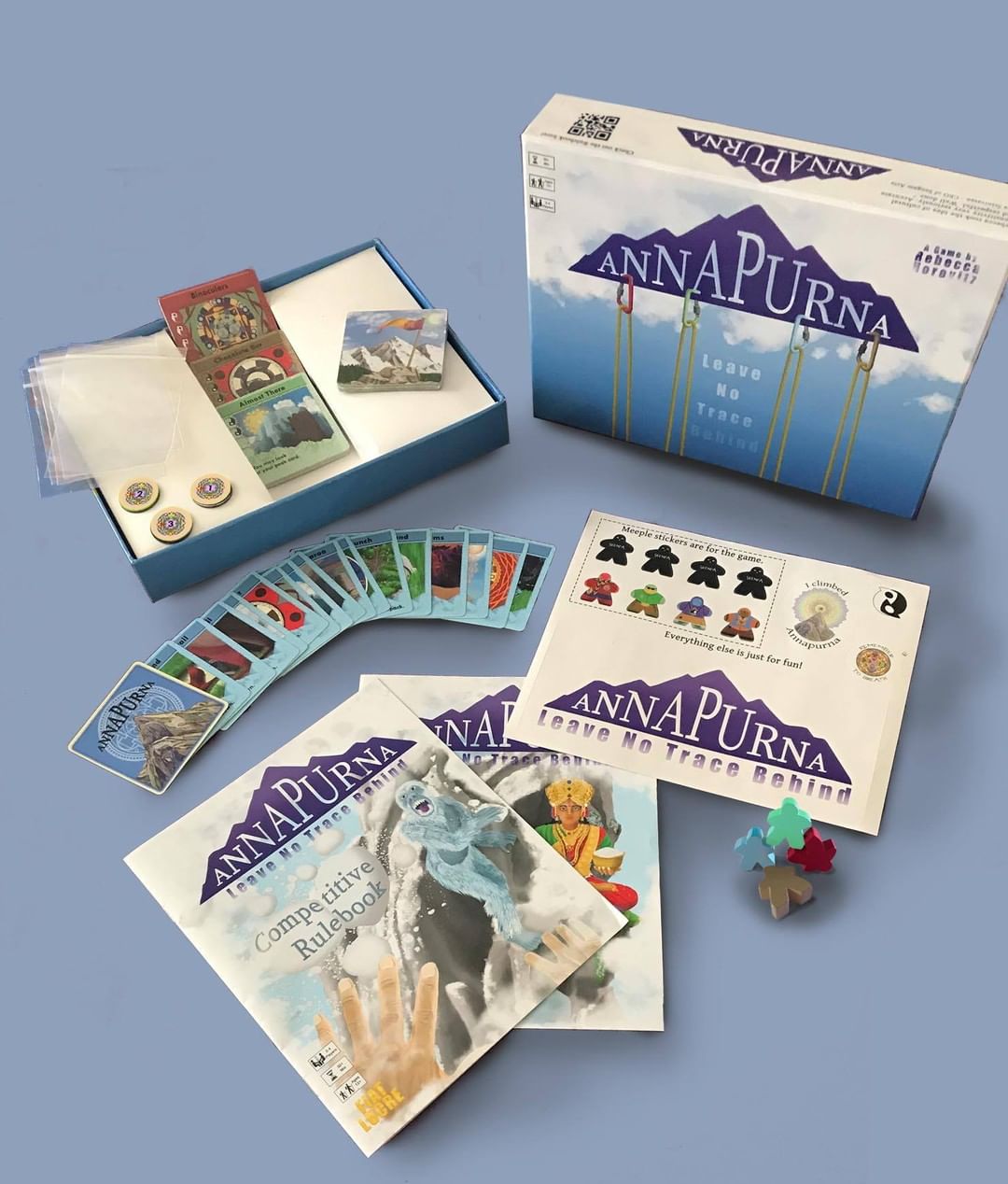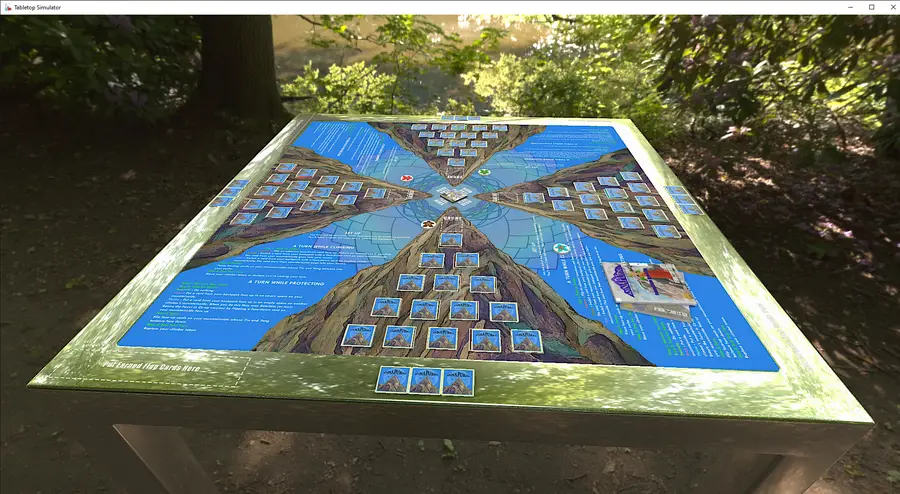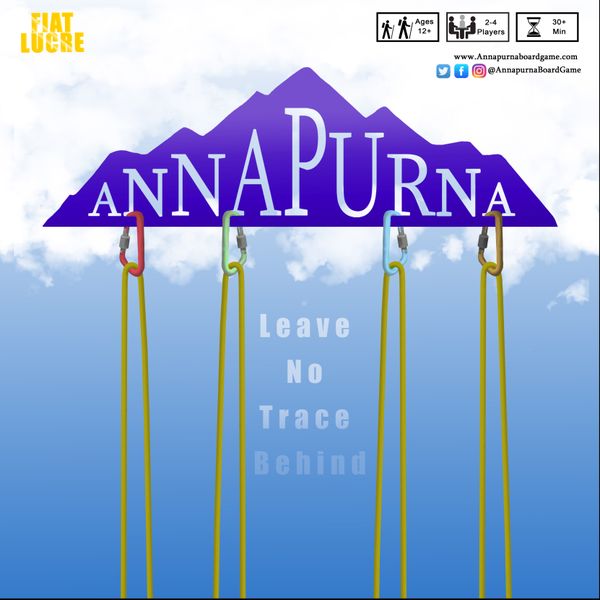The beauty of the current board game boom is that so many people are getting to create their dream projects. There’s a much lower barrier of entry so long as you’re willing to put the work into designing, testing, and promoting the game. It’s not an easy undertaking. But the game I’m previewing today, Annapurna: Leave No Trace Behind, is a great example of what hard work can do in the gaming industry. Designed by Becca Horovitz, the game has been in the works for three years before it got its launch on Kickstarter yesterday. I’ve had my hands on it a for a little while, and even got to take part in a charity tournament at GenCon, and I really like it. Why? Well get your climbing boots on and let me tell you.
What’s In The Box?

Annapurna is pretty simple, as components go. It’s a game of cards and minis, but there’s a lot of character to them as one would hope in simpler games. Drawing on the Himalayan setting as well as the climbing hobby, the different cards represent equipment, locations, and obstacles that make up the climbing one of the world’s most dangerous mountains. Cards show things like yetis, chocolate bars, or badly packed gear bags (who decided to bring high heels?); all in a charming hand-drawn art style. Some of the art draws on Hindu or Buddhist imagery and can even get trippy at times.
How’s It Play?

The game got its theme from the basic setup: each player’s cards are laid out in rows to form a triangle, representing the mountain, and it’s each person’s job to get to the top. Each game, players shuffle their decks (which are identical) and then lay their cards out and taking three in hand. From there, players have to climb (either up or sideways) to discover cards, and each card has an effect. Some might let you move again or peek at other player’s cards, others are bad and might send you down the mountain or make you miss a turn. Alternatively, you can replace a card on the table with a card in your hand to make your move easier or affect the other big mechanic in the game: karma.
In Annapurna, you don’t just win by getting to the top of the mountain. You also win by having balanced karma. Most cards have a yin or yang value (it mixes it’s eastern religions a little but nothing too bad) that you have to have in perfect balance at the top of your mountain. Replacing cards on the board to balance it out, or messing up another player’s karma with a card, is an essential part of the game. Sometimes you get lucky and you make it to the top with easily balanced karma, other times you get bogged down and have to spend some time rejiggering things. This is the only time the game was a little bit less fun, as you don’t really have control over your outcome if it ends up like this. It’s rare, however, and competitive mode does a decent job of balancing for these things, but the potential to…ahem…snowball is still there.
There’s both a competitive a co-op mode to the game, with the only main difference is how the player interactions work. In the co-op, you use your cards to help other players balance their karma because you can’t win unless everyone has won. In competitive, it’s all about screwing over other climbers.
The Verdict

I’ve seen people compare this game to Chess, and I think that it definitely has a lot of that good strategy to it that people who like more abstract games. It’s a fairly simple game on the surface but, like Annapurna itself, is incredibly deceptive. There’s an insane amount of depth and strategy in this game as you manage your own mountain and keep track of the other climbers (whether you’re helping or hurting them), and you have to do a lot of juggling if you want to win. There’s a luck aspect to is in the initial card placement, but the rules give you plenty of options to adapt. It’s fun with two players, but it’s the most fun with four, when everything is at maximum chaos. It’s one of the most unique and interesting games I’ve played in a long while, and there’s a lot of love and craft that went into it. Definitely worth backing if you can.

You can back Annapurna: Leave No Trace Behind on Kickstarter now, and it runs through November 14th. The basic game is $22, and also includes access to “How To Play” livestreams with Becca. Higher tiers add things like personal instructions, Q&A, a very neat little bag, and (in what seems to be a new norm for Kickstarters) branded face masks.
Images via Fiat Lucre and Becca Horovitz

